Leeds South (UK Parliament constituency)
Leeds South was a parliamentary constituency in the city of Leeds, West Yorkshire, which returned one Member of Parliament (MP) to the House of Commons of the Parliament of the United Kingdom from 1885 until it was abolished for the 1983 general election. It was then largely replaced by the new Morley and Leeds South constituency.
| Leeds South | |
|---|---|
| Former Borough constituency for the House of Commons | |
| County | 1885–1974: West Riding of Yorkshire 1974–1983: West Yorkshire |
| 1885–1983 | |
| Number of members | One |
| Replaced by | Leeds Central and Morley & Leeds South[1] |
| Created from | Leeds |
It was the seat of the former Leader of the Labour Party, the late Hugh Gaitskell, and the former Home Secretary Merlyn Rees.
Boundaries
1885–1918: The Municipal Borough of Leeds wards of East Hunslet, South, and West Hunslet, and part of Bramley ward.
1918–1950: The County Borough of Leeds wards of Holbeck and West Hunslet, and part of New Wortley ward.
1950–1955: The County Borough of Leeds wards of Beeston, Holbeck South, Hunslet Carr and Middleton, and West Hunslet.
1955–1974: The County Borough of Leeds wards of Beeston, Holbeck, Hunslet Carr, and Middleton.
1974–1983: The County Borough of Leeds wards of Beeston, East Hunslet, Holbeck, Middleton, and West Hunslet.
History
The constituency was created in 1885 by the Redistribution of Seats Act 1885, and was first used in the general election of that year. Leeds had previously been represented by two MPs (1832–1868) and three MPs (1868–1885). From 1885 it was represented by five single-member constituencies: Leeds Central, Leeds East, Leeds North, Leeds South and Leeds West. The constituencies of Morley, Otley and Pudsey were also created in 1885.
The constituency was abolished for the 1983 general election. It was then largely replaced by the new Morley and Leeds South constituency. After the 1983 general election Leeds was represented by the constituencies of Leeds Central, Leeds East, Leeds North East, Leeds North West, Leeds West and Morley and Leeds South. There were also constituencies of Elmet (created 1983) and Pudsey.
Members of Parliament
Elections
Elections in the 1880s
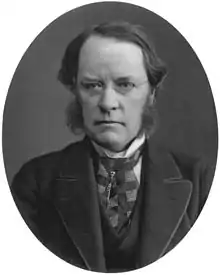
| Party | Candidate | Votes | % | ±% | |
|---|---|---|---|---|---|
| Liberal | Lyon Playfair | 5,208 | 64.5 | ||
| Conservative | Stuart Cunningham Macaskie | 2,869 | 35.5 | ||
| Majority | 2,339 | 29.0 | |||
| Turnout | 8,077 | 73.9 | |||
| Registered electors | 10,931 | ||||
| Liberal win (new seat) | |||||
Playfair was appointed Vice-President of the Committee of the Council on Education, requiring a by-election.
| Party | Candidate | Votes | % | ±% | |
|---|---|---|---|---|---|
| Liberal | Lyon Playfair | Unopposed | |||
| Liberal hold | |||||
| Party | Candidate | Votes | % | ±% | |
|---|---|---|---|---|---|
| Liberal | Lyon Playfair | 4,665 | 61.5 | −3.0 | |
| Conservative | Thomas Hirst Bracken[4] | 2,924 | 38.5 | +3.0 | |
| Majority | 1,741 | 23.0 | −6.0 | ||
| Turnout | 7,589 | 69.4 | −4.5 | ||
| Registered electors | 10,931 | ||||
| Liberal hold | Swing | −3.0 | |||
Elections in the 1890s
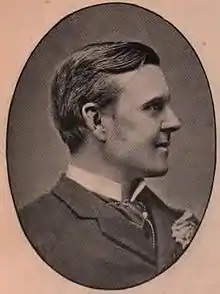
| Party | Candidate | Votes | % | ±% | |
|---|---|---|---|---|---|
| Liberal | Lyon Playfair | 4,829 | 59.4 | -2.1 | |
| Conservative | Reginald Neville | 3,294 | 40.6 | +2.1 | |
| Majority | 1,535 | 18.8 | −4.2 | ||
| Turnout | 8,123 | 71.9 | +2.5 | ||
| Registered electors | 11,290 | ||||
| Liberal hold | Swing | −2.1 | |||
| Party | Candidate | Votes | % | ±% | |
|---|---|---|---|---|---|
| Liberal | John Walton | 4,414 | 56.0 | −3.4 | |
| Conservative | Reginald Neville | 3,466 | 44.0 | +3.4 | |
| Majority | 948 | 12.0 | −6.8 | ||
| Turnout | 7,880 | 69.8 | −2.1 | ||
| Registered electors | 11,290 | ||||
| Liberal hold | Swing | −3.4 | |||
- Caused by Playfair's elevation to the peerage.
| Party | Candidate | Votes | % | ±% | |
|---|---|---|---|---|---|
| Liberal | John Walton | 4,608 | 47.6 | −11.8 | |
| Conservative | Reginald Neville | 4,447 | 46.0 | +5.4 | |
| Ind. Labour Party | Alfred Shaw | 622 | 6.4 | New | |
| Majority | 161 | 1.6 | −17.2 | ||
| Turnout | 9,677 | 81.2 | +9.3 | ||
| Registered electors | 11,921 | ||||
| Liberal hold | Swing | −8.6 | |||
Elections in the 1900s
| Party | Candidate | Votes | % | ±% | |
|---|---|---|---|---|---|
| Liberal | John Walton | 4,952 | 51.2 | +3.6 | |
| Conservative | Reginald Neville | 4,718 | 48.8 | +2.8 | |
| Majority | 234 | 2.4 | +0.8 | ||
| Turnout | 9,670 | 71.9 | −9.3 | ||
| Registered electors | 13,442 | ||||
| Liberal hold | Swing | +0.4 | |||
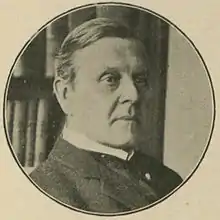
| Party | Candidate | Votes | % | ±% | |
|---|---|---|---|---|---|
| Liberal | John Walton | 6,200 | 50.2 | −1.0 | |
| Labour Repr. Cmte. | Albert E. Fox | 4,030 | 32.6 | New | |
| Conservative | Henry Cameron-Ramsay-Fairfax-Lucy | 2,126 | 17.2 | −31.6 | |
| Majority | 2,170 | 17.6 | +15.2 | ||
| Turnout | 12,356 | 81.7 | +9.8 | ||
| Registered electors | 15,119 | ||||
| Liberal hold | Swing | +15.3 | |||
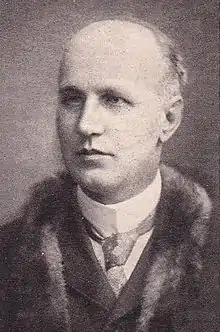
| Party | Candidate | Votes | % | ±% | |
|---|---|---|---|---|---|
| Liberal | William Middlebrook | 5,274 | 41.7 | −8.5 | |
| Conservative | Reginald Neville | 4,915 | 38.9 | +21.7 | |
| Labour | Albert E. Fox | 2,451 | 19.4 | −13.2 | |
| Majority | 359 | 2.8 | −14.8 | ||
| Turnout | 12,640 | 82.5 | +0.8 | ||
| Registered electors | 15,321 | ||||
| Liberal hold | Swing | +2.4 | |||
Elections in the 1910s
| Party | Candidate | Votes | % | ±% | |
|---|---|---|---|---|---|
| Liberal | William Middlebrook | 8,969 | 67.3 | +17.1 | |
| Conservative | William Nicholson | 4,366 | 32.7 | +15.5 | |
| Majority | 4,603 | 34.6 | +31.8 | ||
| Turnout | 13,335 | 84.8 | +3.1 | ||
| Liberal hold | Swing | +15.9 | |||
| Party | Candidate | Votes | % | ±% | |
|---|---|---|---|---|---|
| Liberal | William Middlebrook | 6,064 | 48.2 | -19.1 | |
| Conservative | William Nicholson | 3,804 | 30.3 | -2.4 | |
| Labour | John Badlay | 2,706 | 21.5 | New | |
| Majority | 2,260 | 17.9 | -16.7 | ||
| Turnout | 12,574 | 80.0 | -4.8 | ||
| Liberal hold | Swing | ||||
General Election 1914/15:
Another General Election was required to take place before the end of 1915. The political parties had been making preparations for an election to take place and by the July 1914, the following candidates had been selected;
- Liberal: William Middlebrook
- Unionist:
- Labour:
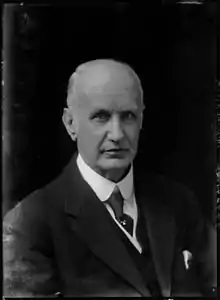
| Party | Candidate | Votes | % | ±% | |
|---|---|---|---|---|---|
| C | Liberal | William Middlebrook | 10,609 | 60.6 | +12.4 |
| Labour | Frank Fountain | 5,510 | 31.5 | +10.0 | |
| Independent | James A Brook* | 1,377 | 7.9 | New | |
| Majority | 5,099 | 29.1 | +11.2 | ||
| Turnout | 17,496 | 48.8 | −31.2 | ||
| Registered electors | 35,843 | ||||
| Liberal hold | Swing | +1.2 | |||
| C indicates candidate endorsed by the coalition government. | |||||
* Brook was supported by the three local branches of National Association of Discharged Sailors and Soldiers, National Federation of Discharged and Demobilized Sailors and Soldiers and Comrades of the Great War.
Elections in the 1920s
| Party | Candidate | Votes | % | ±% | |
|---|---|---|---|---|---|
| Labour | Henry Charleton | 13,210 | 53.7 | +22.2 | |
| Liberal | William Middlebrook | 11,380 | 46.3 | −14.3 | |
| Majority | 1,830 | 7.4 | N/A | ||
| Turnout | 24,590 | 69.8 | +21.0 | ||
| Registered electors | 35,252 | ||||
| Labour gain from Liberal | Swing | +18.3 | |||
| Party | Candidate | Votes | % | ±% | |
|---|---|---|---|---|---|
| Labour | Henry Charleton | 11,705 | 44.2 | −9.5 | |
| Unionist | Reginald Neville | 7,679 | 29.0 | New | |
| Liberal | Granville Gibson | 7,083 | 26.8 | −19.5 | |
| Majority | 4,026 | 15.2 | +7.8 | ||
| Turnout | 26,467 | 74.1 | +4.3 | ||
| Registered electors | 35,719 | ||||
| Labour hold | Swing | +5.0 | |||
| Party | Candidate | Votes | % | ±% | |
|---|---|---|---|---|---|
| Labour | Henry Charleton | 12,799 | 46.3 | +2.1 | |
| Unionist | B.T. Graham Ford | 11,008 | 39.9 | +10.9 | |
| Liberal | Frank Geary | 3,801 | 13.8 | −13.0 | |
| Majority | 1,791 | 6.4 | −8.8 | ||
| Turnout | 27,608 | 76.5 | +2.4 | ||
| Registered electors | 36,085 | ||||
| Labour hold | Swing | −4.4 | |||
| Party | Candidate | Votes | % | ±% | |
|---|---|---|---|---|---|
| Labour | Henry Charleton | 18,043 | 52.5 | +6.2 | |
| Unionist | B.T. Graham Ford | 9,433 | 27.5 | −12.4 | |
| Liberal | Ernest Kilburn Scott | 6,884 | 20.0 | +6.2 | |
| Majority | 8,610 | 25.0 | +18.6 | ||
| Turnout | 34,360 | 76.2 | −0.3 | ||
| Registered electors | 45,084 | ||||
| Labour hold | Swing | +9.3 | |||
Elections in the 1930s
| Party | Candidate | Votes | % | ±% | |
|---|---|---|---|---|---|
| Conservative | Noel Whiteside | 14,881 | 42.12 | ||
| Labour | Henry Charleton | 14,156 | 40.07 | ||
| Liberal | Frederick L. Boult | 6,291 | 17.81 | ||
| Majority | 725 | 2.05 | N/A | ||
| Turnout | 35,328 | 77.56 | |||
| Conservative gain from Labour | Swing | ||||
| Party | Candidate | Votes | % | ±% | |
|---|---|---|---|---|---|
| Labour | Henry Charleton | 15,223 | 46.03 | ||
| Conservative | Noel Whiteside | 14,207 | 42.96 | ||
| Social Credit | Wilfred Townend | 3,642 | 11.01 | New | |
| Majority | 1,016 | 3.07 | N/A | ||
| Turnout | 33,072 | 73.68 | |||
| Labour gain from Conservative | Swing | ||||
General Election 1939/40:
Another General Election was required to take place before the end of 1940. The political parties had been making preparations for an election to take place and by the Autumn of 1939, the following candidates had been selected;
- Labour: Hugh Gaitskell[8]
- Conservative: Donald Kaberry[8]
- Liberal: J. Alun Williams[9]
- British Union: John Angus Macnab
Election in the 1940s
| Party | Candidate | Votes | % | ±% | |
|---|---|---|---|---|---|
| Labour | Hugh Gaitskell | 17,899 | 61.03 | ||
| Conservative | Arthur Maxwell Ramsden | 7,497 | 25.56 | ||
| Liberal | William Barford | 3,933 | 13.41 | New | |
| Majority | 10,402 | 35.47 | |||
| Turnout | 29,329 | 75.95 | |||
| Labour hold | Swing | ||||
Elections in the 1950s
| Party | Candidate | Votes | % | ±% | |
|---|---|---|---|---|---|
| Labour | Hugh Gaitskell | 29,795 | 61.11 | ||
| Conservative | B.H. Wood | 14,436 | 29.61 | ||
| Liberal | Edgar Meeks | 4,525 | 9.28 | ||
| Majority | 15,359 | 31.50 | |||
| Turnout | 48,756 | 84.61 | |||
| Labour hold | Swing | ||||
| Party | Candidate | Votes | % | ±% | |
|---|---|---|---|---|---|
| Labour | Hugh Gaitskell | 30,712 | 65.06 | ||
| Conservative | Winifred D. Brown | 16,493 | 34.94 | ||
| Majority | 14,219 | 30.12 | |||
| Turnout | 47,205 | 82.19 | |||
| Labour hold | Swing | ||||
| Party | Candidate | Votes | % | ±% | |
|---|---|---|---|---|---|
| Labour | Hugh Gaitskell | 25,833 | 65.15 | ||
| Conservative | Winifred D. Brown | 13,817 | 34.85 | ||
| Majority | 12,016 | 30.30 | |||
| Turnout | 39,650 | 72.85 | |||
| Labour hold | Swing | ||||
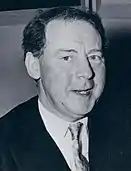
| Party | Candidate | Votes | % | ±% | |
|---|---|---|---|---|---|
| Labour | Hugh Gaitskell | 24,442 | 58.6 | -6.5 | |
| Conservative | John Francis William Addey | 12,956 | 31.0 | -3.8 | |
| Liberal | John Brian Meeks | 4,340 | 10.4 | New | |
| Majority | 11,486 | 27.6 | -2.7 | ||
| Turnout | 41,738 | 79.0 | +6.2 | ||
| Labour hold | Swing | ||||
Elections in the 1960s
| Party | Candidate | Votes | % | ±% | |
|---|---|---|---|---|---|
| Labour | Merlyn Rees | 18,785 | 62.9 | +4.3 | |
| Conservative | John Udal | 5,996 | 20.09 | -10.95 | |
| Liberal | Brian Walsh (lawyer) | 4,399 | 14.74 | +4.34 | |
| Communist | Bert Ramelson | 670 | 2.24 | New | |
| Majority | 12,789 | 42.84 | +15.32 | ||
| Turnout | 29,850 | ||||
| Labour hold | Swing | ||||
| Party | Candidate | Votes | % | ±% | |
|---|---|---|---|---|---|
| Labour | Merlyn Rees | 22,339 | 63.12 | ||
| Conservative | Percival Arthur Woodward | 12,123 | 34.26 | ||
| Communist | Bert Ramelson | 928 | 2.62 | N/A | |
| Majority | 10,997 | 28.86 | |||
| Turnout | 35,390 | 72.00 | |||
| Labour hold | Swing | ||||
| Party | Candidate | Votes | % | ±% | |
|---|---|---|---|---|---|
| Labour | Merlyn Rees | 23,171 | 68.76 | ||
| Conservative | Percival Arthur Woodward | 9,813 | 29.12 | ||
| Communist | Bert Ramelson | 714 | 2.12 | ||
| Majority | 13,358 | 39.64 | |||
| Turnout | 33,698 | 68.11 | |||
| Labour hold | Swing | ||||
Election in the 1970s
| Party | Candidate | Votes | % | ±% | |
|---|---|---|---|---|---|
| Labour | Merlyn Rees | 19,536 | 59.82 | ||
| Conservative | Gavin K. Macpherson | 9,311 | 28.51 | ||
| Liberal | Stephen Cooksey | 3,810 | 11.67 | New | |
| Majority | 10,225 | 31.31 | |||
| Turnout | 32,657 | 65.95 | |||
| Labour hold | Swing | ||||
| Party | Candidate | Votes | % | ±% | |
|---|---|---|---|---|---|
| Labour | Merlyn Rees | 21,365 | 55.24 | ||
| Liberal | Denis Pedder | 9,505 | 24.57 | ||
| Conservative | Peter David Harmer | 7,810 | 20.19 | ||
| Majority | 11,860 | 30.67 | |||
| Turnout | 38,680 | 73.95 | |||
| Labour hold | Swing | ||||
| Party | Candidate | Votes | % | ±% | |
|---|---|---|---|---|---|
| Labour | Merlyn Rees | 21,653 | 64.44 | ||
| Conservative | Thomas Neil Metcalfe Stow | 6,388 | 19.01 | ||
| Liberal | John Adams | 5,563 | 16.55 | ||
| Majority | 15,265 | 45.43 | |||
| Turnout | 33,604 | 63.76 | |||
| Labour hold | Swing | ||||
| Party | Candidate | Votes | % | ±% | |
|---|---|---|---|---|---|
| Labour | Merlyn Rees | 22,388 | 65.02 | ||
| Conservative | R. Ratcliffe | 8,058 | 23.40 | ||
| Liberal | F. Hurst | 3,568 | 10.36 | ||
| National Front | B. Spink | 416 | 1.21 | New | |
| Majority | 14,330 | 41.62 | |||
| Turnout | 35,430 | 68.70 | |||
| Labour hold | Swing | ||||
References
- "'Leeds South', Feb 1974 - May 1983". ElectionWeb Project. Cognitive Computing Limited. Archived from the original on 3 April 2016. Retrieved 23 March 2016.
- British Parliamentary Election Results 1885-1918, FWS Craig
- The Liberal Year Book, 1907
- "Biography of Candidates: Yorkshire". Yorkshire Post and Leeds Intelligencer. 3 July 1886. p. 9. Retrieved 3 December 2017 – via British Newspaper Archive.
- Debrett's House of Commons & Judicial Bench, 1901
- Debrett's House of Commons & Judicial Bench, 1916
- British Parliamentary Election Results 1918-1949, FWS Craig
- Yorkshire Post and Leeds Intelligencer 31 March 1939
- Yorkshire Post and Leeds Intelligencer 6 June 1939
| Parliament of the United Kingdom | ||
|---|---|---|
| Preceded by Bristol South East |
Constituency represented by the Chancellor of the Exchequer 1950–1951 |
Succeeded by Saffron Walden |
| Preceded by Lewisham South |
Constituency represented by the Leader of the Opposition 1955–1963 |
Succeeded by Belper |